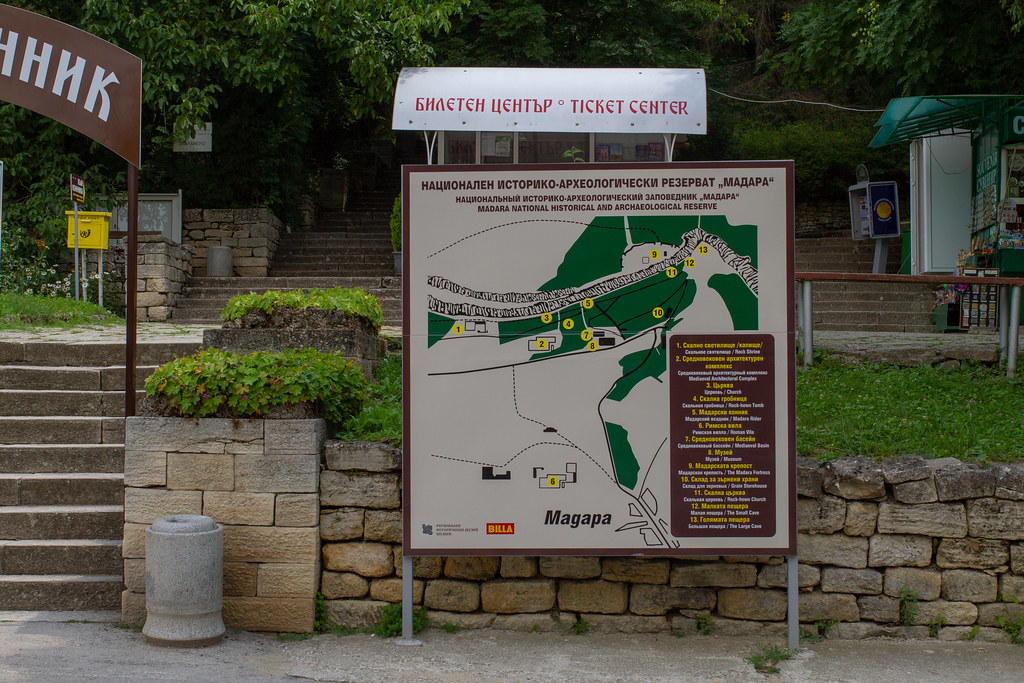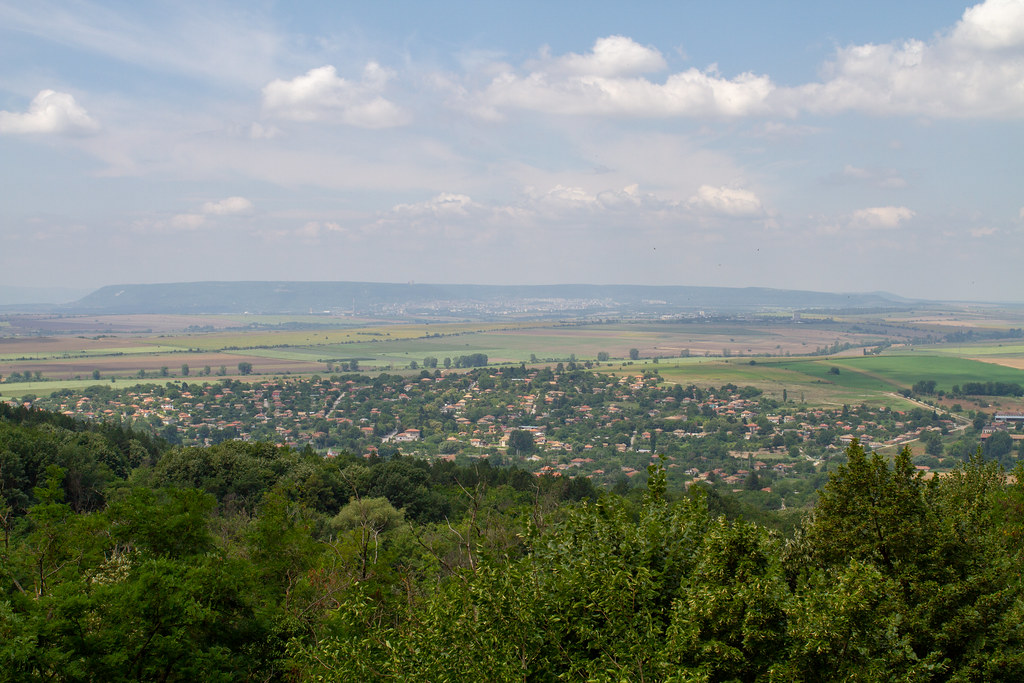Date and Time of Visit: July 18, 2018, approximately 11:00 a.m.
From this day on, we leave the Black Sea and head back into the interior of Bulgaria. Last day in Bulgaria. The first destination is the World Heritage Site « Madara Knight Statue » in the northeast of Bulgaria.
The statue of the Knight of Madara is located in the Madara National Historical and Archaeological Reserve, 17 km northeast of the city of Shumen, 2 km from the village of Madara and 75 km from the city of Varna. The relief is carved into a 23-meter-high rock and was discovered in 1872; it is estimated to have been painted around 710. The Madara Knight is a masterpiece of Bulgarian art of the early Middle Ages. It was inscribed on the UNESCO World Heritage List in 1979, and in 2008 it was declared a global symbol of Bulgaria.
It is the appreciation of the statue of the knight of Madara, but first of all, it buys the ticket at this entrance.


Then, go straight up the stone stairs to the left of the ticket office, and at the end of the stairs, you can see the relief.


At first I couldn’t tell which one was the relief unless I looked carefully.

レリーフには槍を手にした等身大の騎士、馬の足元にはねじ伏せられたライオン、騎士の後ろには狩猟犬が従っています。ある伝説よれば「1人のラテン系の王が、マダラの台地で狩猟をしたが岩石から転落し亡くなった。この王の親近者たちが岩石に王の面影を彫刻家に彫らせた」と伝えられているとのことです。(出典:ブルガリア・オフィシャル観光サイト)
一方、科学的な仮説では、騎士像は、ブルガリア帝国のクルム王(統治803年?814年)、テルヴェル王(統治701年?718年)、アスパルフ王(681年?791年)、更にはブルガール人が信仰した最高位の神タングラ(Tangra)と関係しているのではないかということです。(出典:ブルガリア・オフィシャル観光サイト)
The area is rich in nature and is large enough to have a small hike or picnic.



There is also a parking lot and a souvenir shop at the entrance, where you can buy drinks and snacks, although the number of parking spaces is limited.

We have two more World Heritage Sites to visit this day. It’s going to be a long day.


